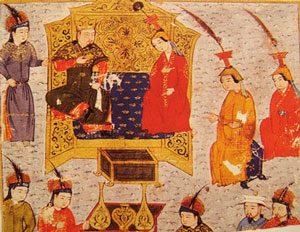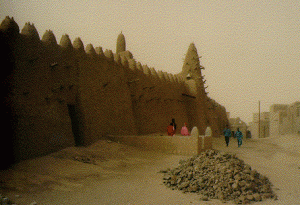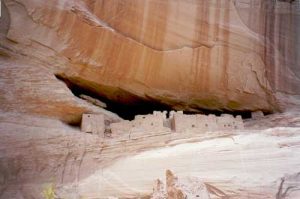
The Mongol court (1200s AD) – Late Middle Ages timeline
The Little Ice Age
After the warming trend of 1000 AD came a colder period around 1300 AD called the Little Ice Age. Again, people felt the effects around the world. In Central Asia, the Mongols rose to power in the late 1200s AD. They conquered China, Russia, northern India, and most of the Islamic Empire and united them into one huge empire.
Who were the Mongols?
The spread of cotton
The Little Ice Age
The Mongols weakened West Asia, but they made trade and travel easier. So now travelers and inventions like steel, cotton, sugar, rice, paper, movable type, compasses, and gunpowder traveled easily across Eurasia.

Burying people who died of plague – Late Middle Ages timeline
The Black Death
In 1328, though, it turned out that all this traveling could also spread disease. The bubonic plague got started in China or Central Asia. It soon spread from one end of the Mongol Empire to the other. Then it reached Europe and North Africa on sailing ships.
What was the Black Death?
Medieval ships and sailing
The Ottoman Empire
Millions of people died all over Europe, Asia, and North Africa. The Mongol Empire collapsed into many smaller countries. The Ming Dynasty took over China, and the Ottoman Empire got West Asia. Russia took Central Asia, and the Delhi Sultanate took India.
Timur in Central Asia

The walls of Timbuktu, in Mali, West Africa
In the 1400s, once the plague was pretty much over, the Mongols tried to put their empire back together. They had a new king, Timur. Timur conquered the Delhi Sultanate. He also took over much of West Asia, though he couldn’t take China again.
More about Timur
The Delhi Sultanate
The fall of Constantinople
Medieval African economy
Because the Ottomans had lost a lot of the eastern part of their empire to the Mongols, they conquered more land in the West, taking over Constantinople in 1453, and also a lot of Eastern Europe and North Africa. South of the Sahara, Islamic kingdoms flourished in Ghana and Mali, while along the east coast of Africa people traded with Islamic and Indian sailing ships.

Mesa Verde, Colorado
Navajo and Apache move south
In North America, the Mexica moved south and formed the Aztec Empire in Mexico. Their relatives the Navajo moved south from the Great Plains into the southwest (modern Arizona) and took up farming corn and beans. The Pueblo people had to abandon land that had gotten too dry, and moved south-west into southern Arizona and New Mexico.
Who were the Navajo?
The Pueblo people
Mississippian collapse
A great deal of trade was moving up and down the Mississippi and Missouri rivers, with the city of Cahokia where they came together (modern St. Louis). They controlled salt mines nearby. Canoes brought copper from Lake Superior, dried fish from the Columbia and Snake rivers in the Pacific Northwest, bison jerky from the Shoshone at Yellowstone, tobacco from the Ohio River valley, and turquoise from the Pueblo people.
Mississippians
Chinook
Nez Perce
Shoshone
But about 1400 AD, the Mississippian network collapsed – maybe again because of the Little Ice Age.
Corn and the Iroquois
The Iroquois moved north from Maryland up to New York, bringing farming with them and growing corn and beans, squash, sunflowers and tobacco. This move pushed the Algonquin further north into Canada.
Where did corn come from?
Native American food

Inca gold mask
New empires in South America
In South America, the new empire of the Inca formed in Peru, while the Maya and Zapotec continued to rule Central America.
Columbus sails to the Caribbean
At the same time, the Europeans were pushing the Almohads out of Spain. The last Islamic rulers were forced out of Spain in 1492 AD, and in the same year Ferdinand and Isabella, the king and queen of Spain, sent Christopher Columbus to sail to North America.